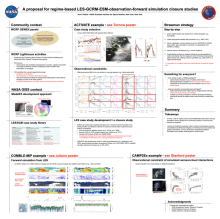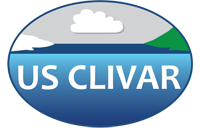A proposal for regime-based LES-GCRM-ESM-observation-forward simulation closure studies
Ann
Fridlind
NASA GISS
Poster
The large-eddy simulation (LES) modeling approach is widely used to study cloud dynamical and coupled microphysical processes. By extension, regime-based libraries of LES case studies are widely used at climate and weather model development centers internationally as a benchmark for model physics performance in the simulation of stratocumulus, cumulus, mixed-phase clouds, transitions, etc. Such LES case studies are also commonly a leading tool during development of new schemes and their refinements throughout the modeling community, including schemes for Earth system, weather and global cloud resolving models. For such model development applications, recent trends include increased use of a Lagrangian framework that follows air mass transformations and implementation of more realistic aerosol-cloud interactions (e.g., prognostic aerosol modes with realistic properties based on field measurements). The satellite measurement community has also made extensive use of LES case studies for development and testing of retrieval algorithms. To the extent that forward simulation of observed quantities is a component of that work, size-resolved or more detailed microphysics schemes are often required. Within the satellite retrieval development community, there can be a greater emphasis on establishing retrieval behaviors for more simplified scenarios (e.g., simplified aerosol properties or fixed droplet number concentration). Finally, the closure study approach offers a broadly sound strategy to test model-observation or observation-observation agreement within given observational uncertainty characteristics. Putting these pieces together, it is proposed that regime-based LES-GCRM-ESM-observation-forward simulation closure studies with realistic aerosol, based on recent field campaigns that offer both extensive in situ and remote sensing observations, could provide a strong collaborative foundation that would broadly span the modeling and satellite communities, with mutual benefits.

Fridlind-Ann-poster.pdf
(4.93 MB)
Meeting homepage
